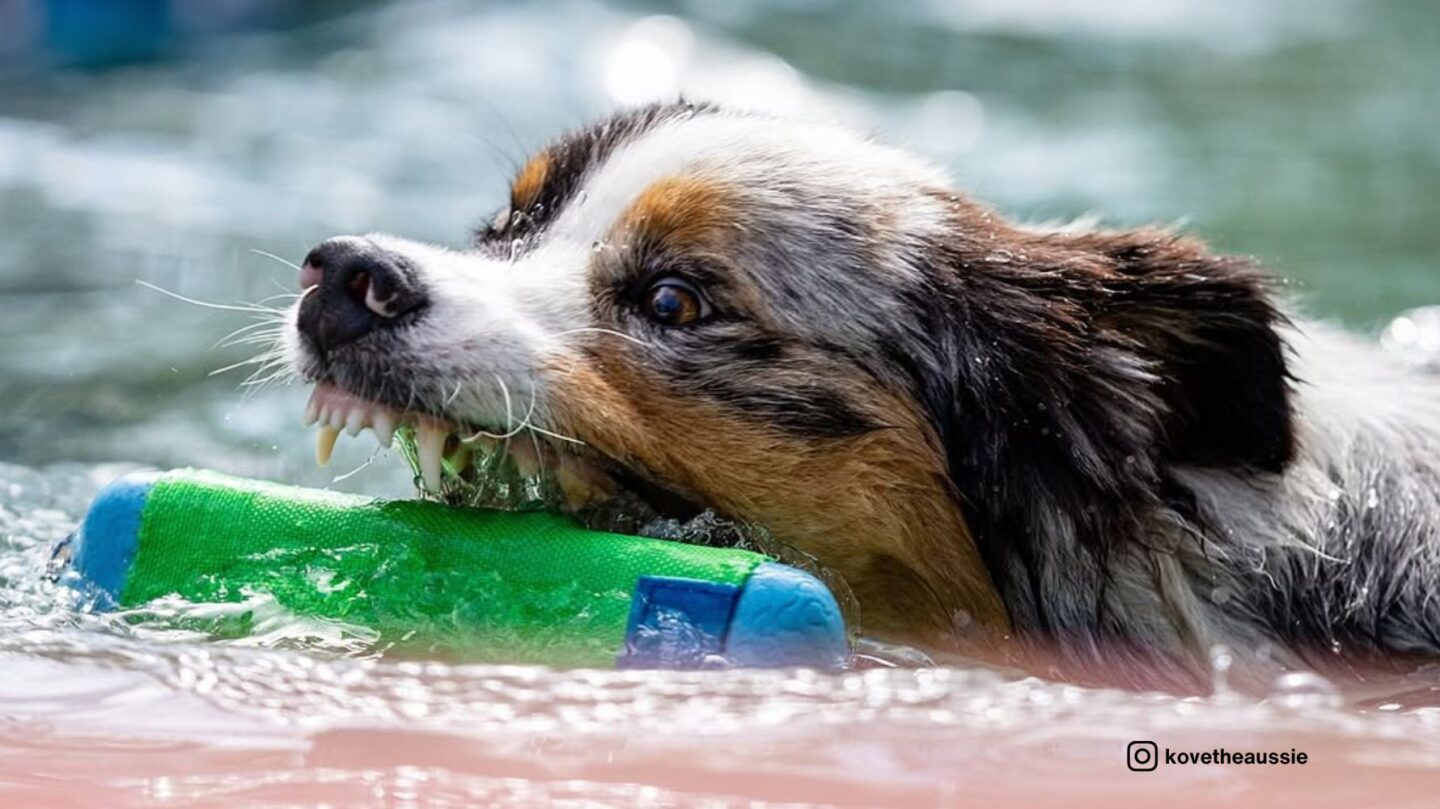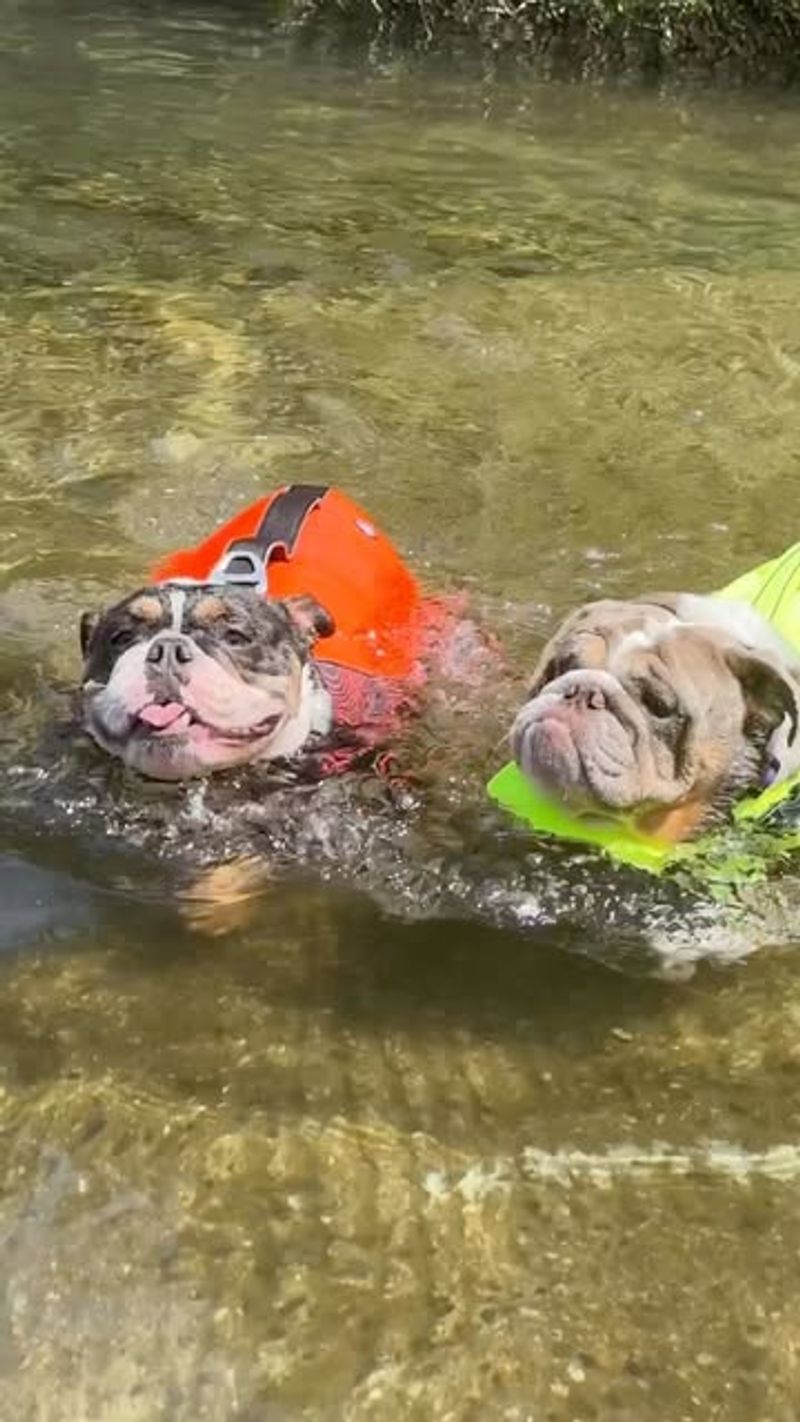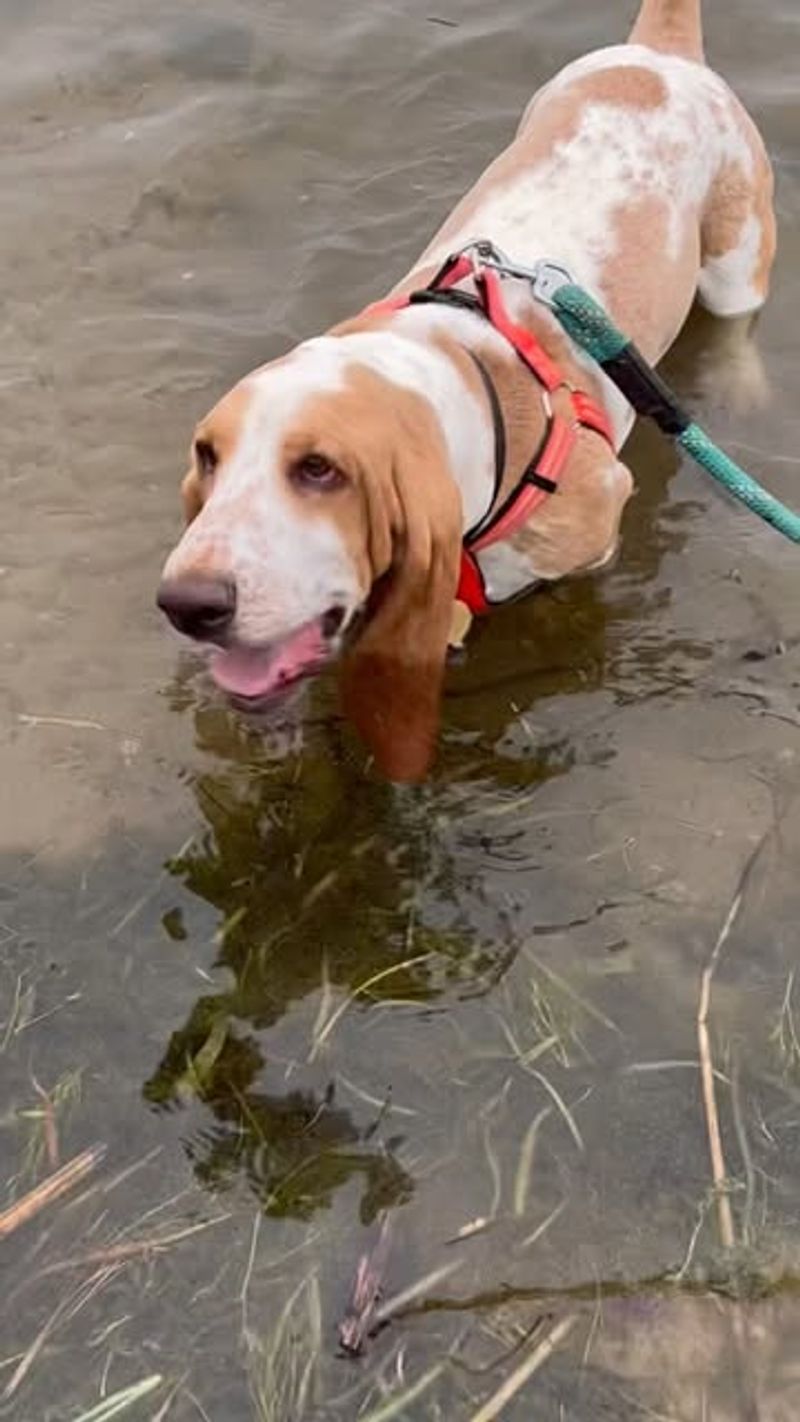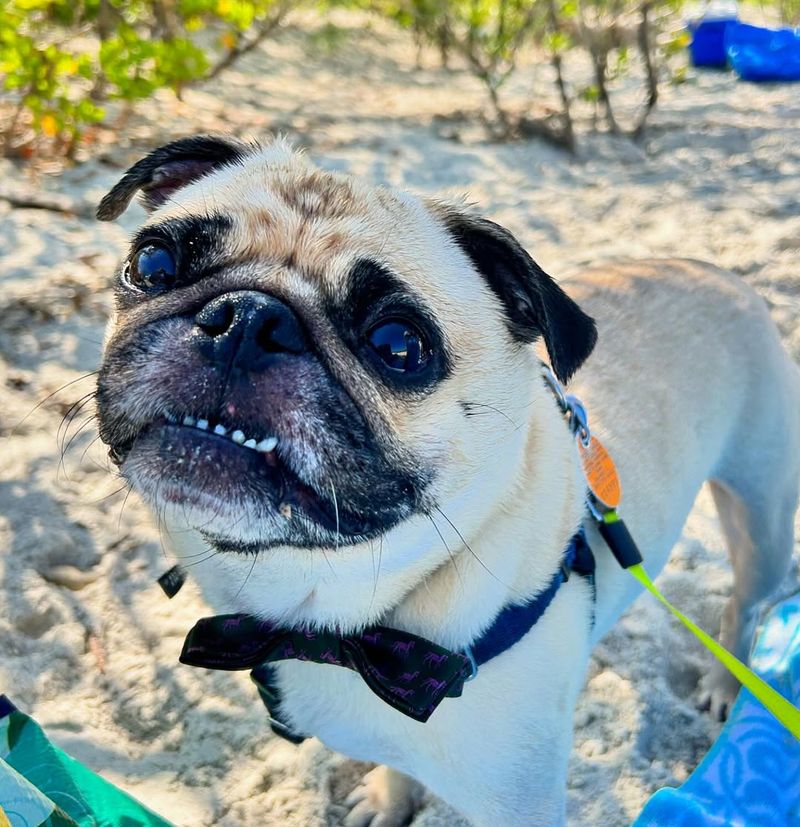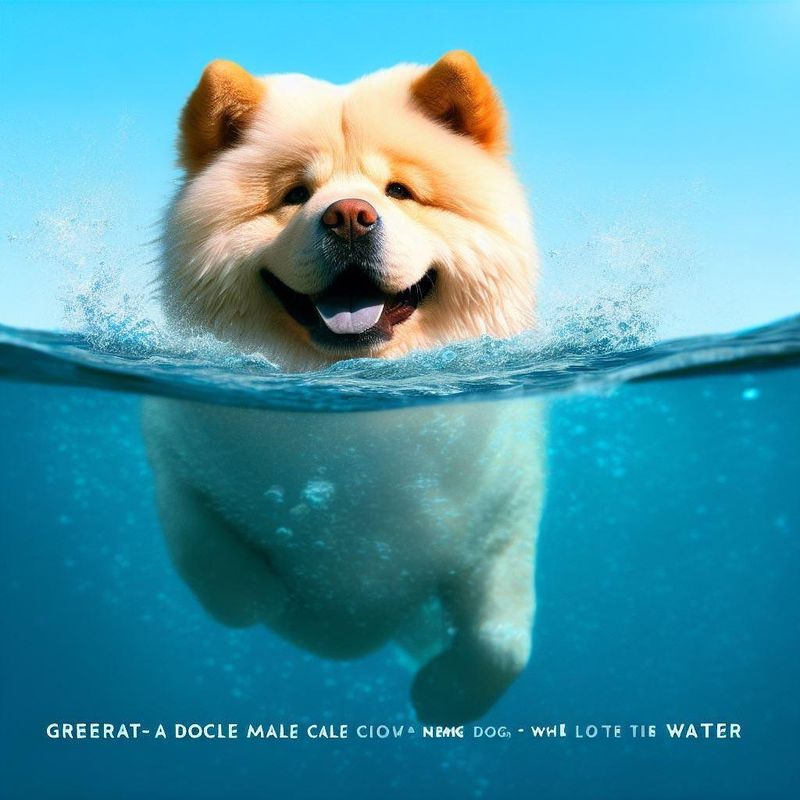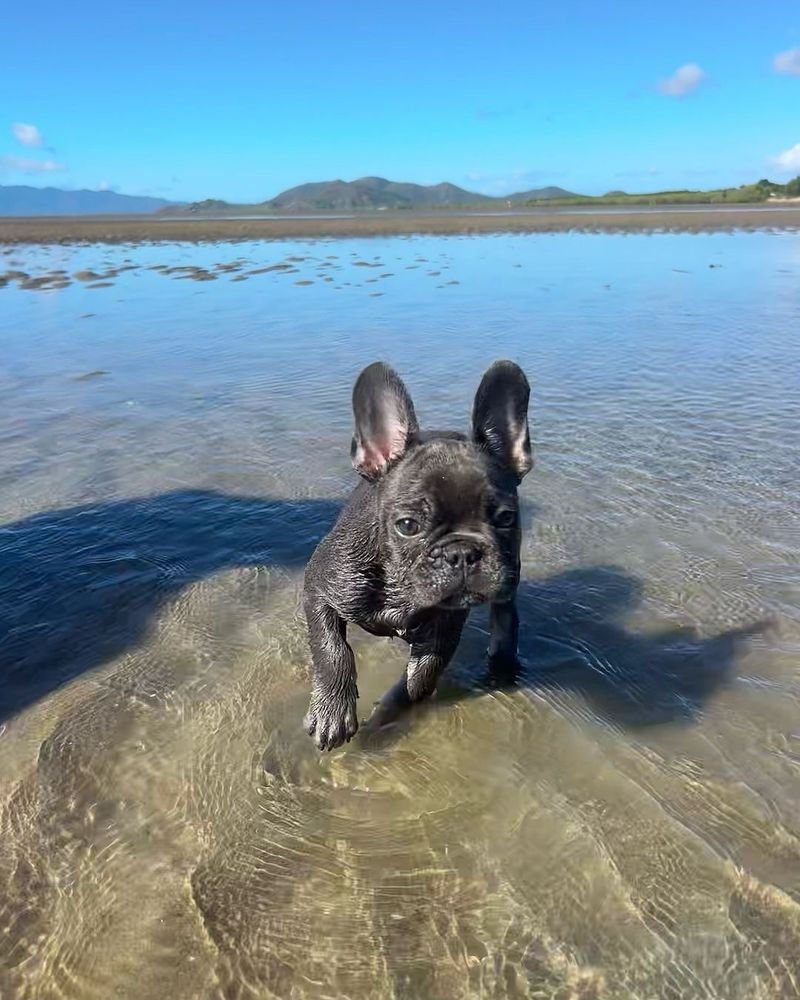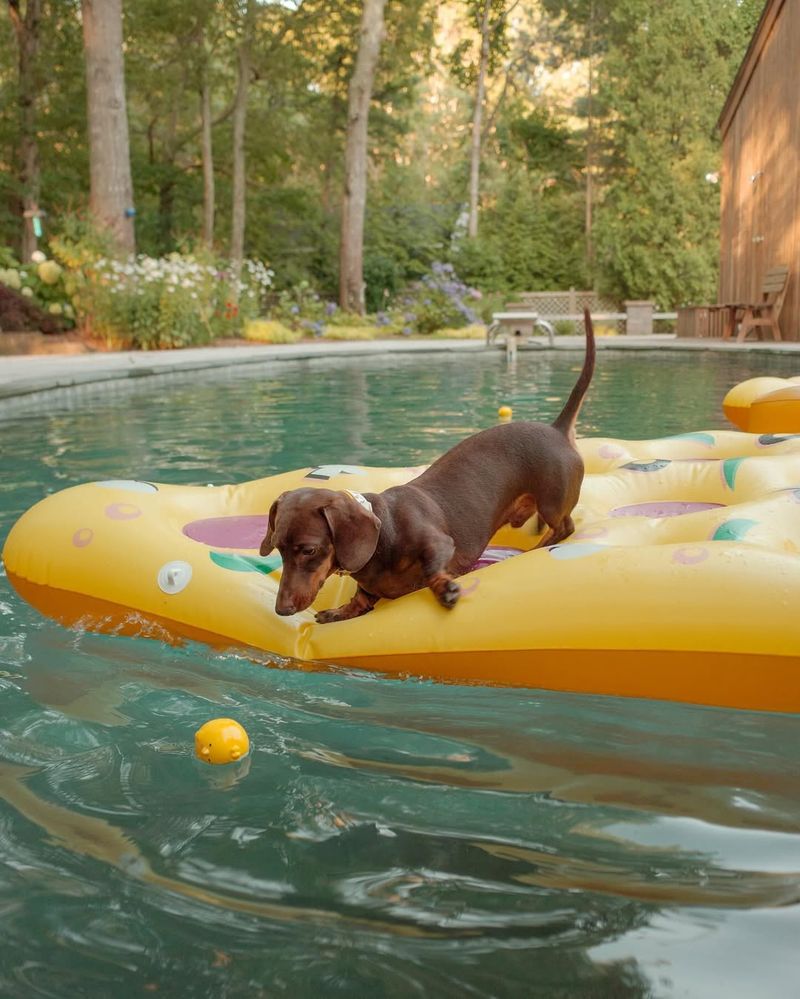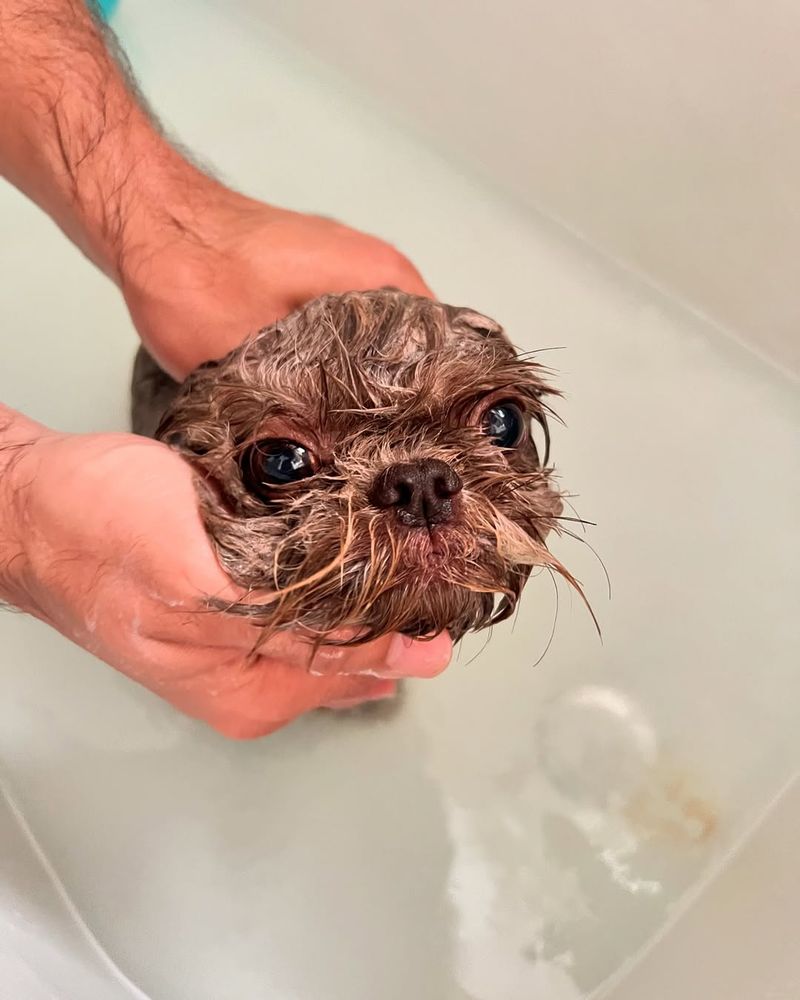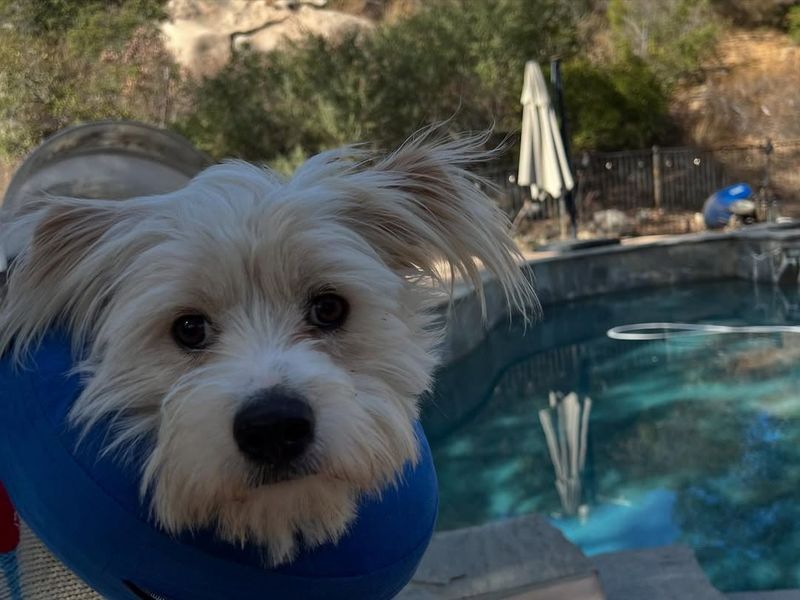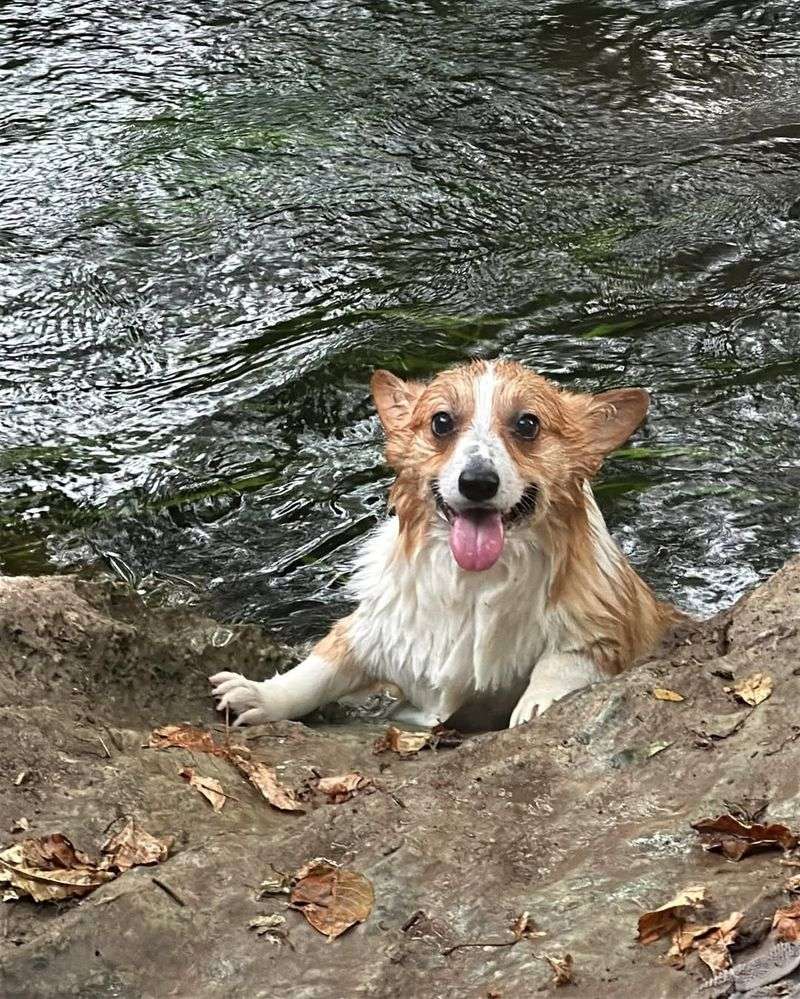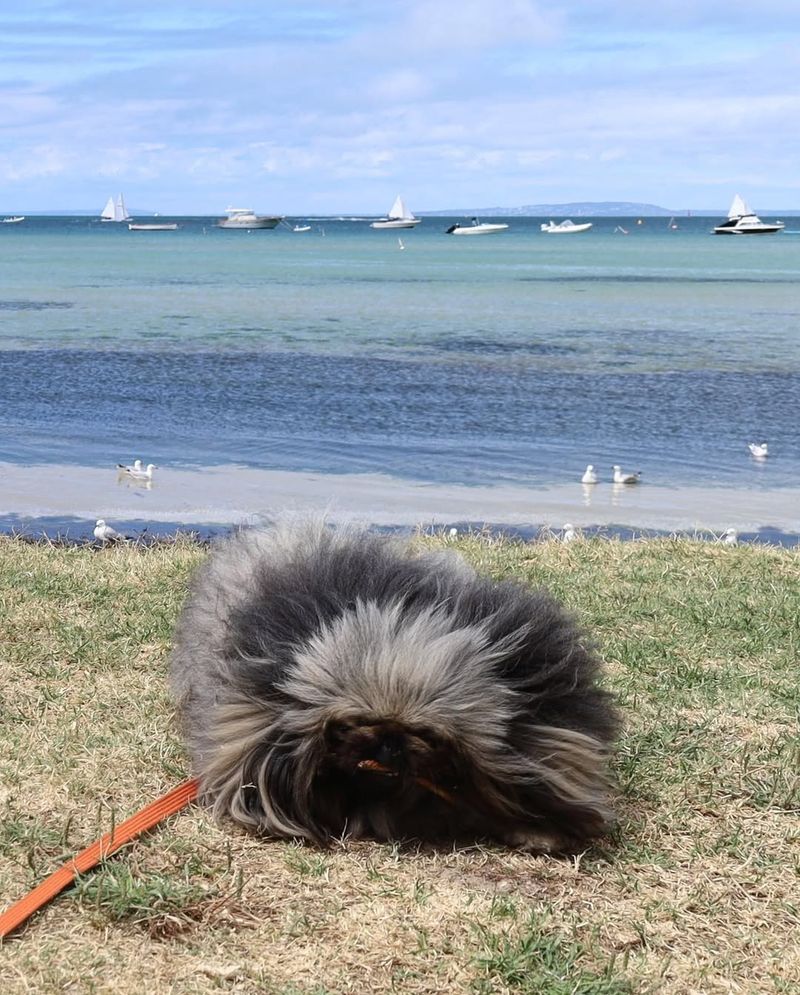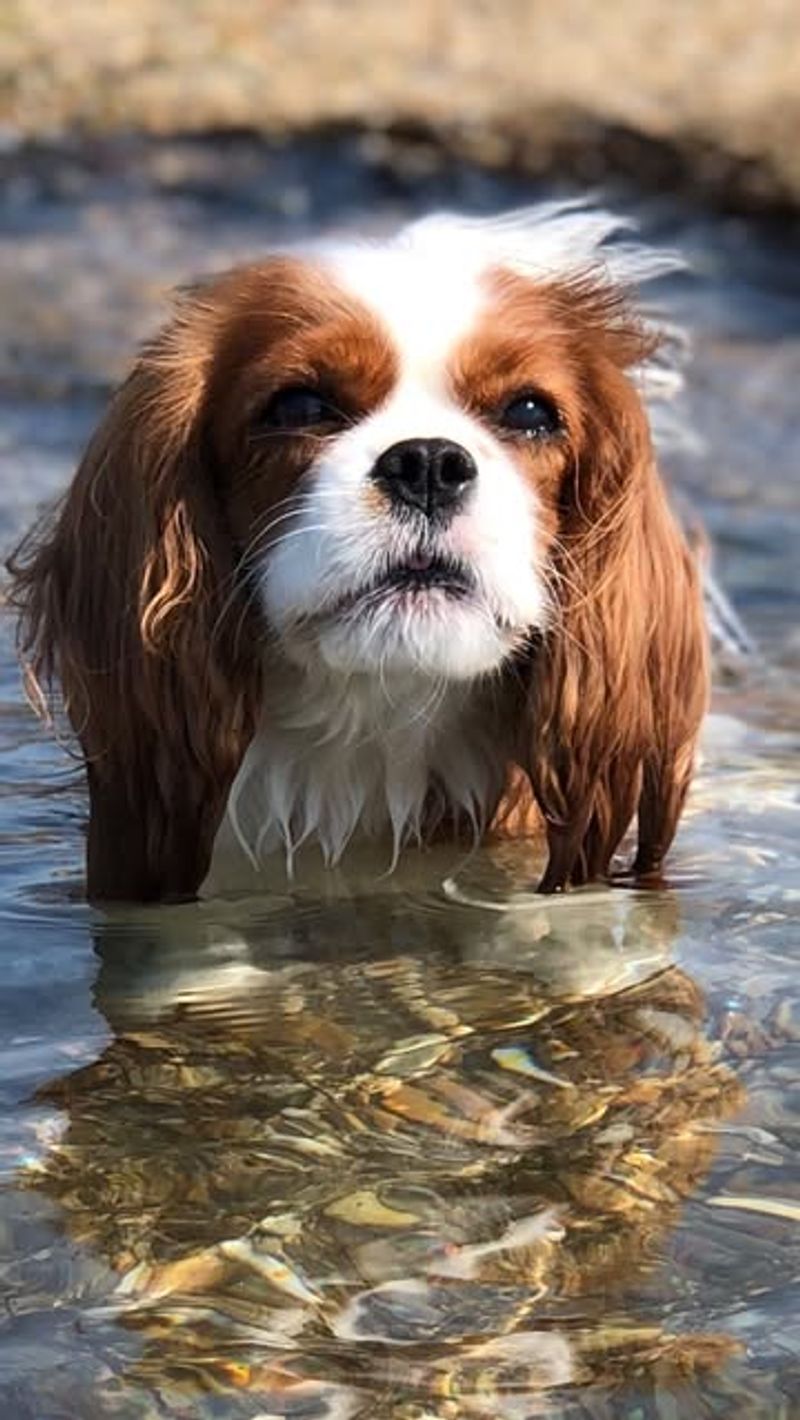Dogs are known for their love of adventure and play, but not all breeds are natural swimmers. It’s crucial for pet owners to be aware of their dog’s capabilities and monitor them closely around water. Some breeds have physical traits or temperaments that make swimming challenging, thus requiring extra supervision. Understanding these needs ensures safety and fun for both the pet and the owner. Here are 11 dog breeds that should never be left alone in the water due to their particular characteristics and needs.
Bulldog
Bulldogs are well-loved for their stocky build and charming faces, but their physical structure poses challenges in the water. Their short legs and dense body make swimming a strenuous activity. If placed in water unsupervised, they risk tiring quickly and struggling to stay afloat. Pet owners should always be nearby to support them, even in shallow waters. Additionally, Bulldogs can easily become overheated, making it essential to keep swimming sessions brief. To ensure their safety, consider using a doggy life jacket to provide buoyancy and peace of mind. Always prioritize their comfort and never leave them unattended by water.
Basset Hound
Basset Hounds are instantly recognizable with their long ears and droopy eyes. However, their unique build can hinder their swimming abilities. Their short legs and elongated body present challenges in maintaining buoyancy and propulsion in water. Owners should maintain vigilance when their Basset Hound is near or in water, as they can tire more quickly than other breeds. Additionally, their ears can become waterlogged, leading to discomfort or ear infections. To protect them, ensure they have constant supervision or opt for specialized swimming gear. This will provide safety and allow them to enjoy their aquatic adventures without risk.
Pug
Pugs are cherished for their charming personalities and distinctive features, but they are not naturally aquatic. Their compact, muscular bodies can make swimming daunting. Often, they may struggle to keep their head above water, leading to potential distress. Owners should always be vigilant when their Pug is near water and consider using flotation devices for added security. Short-nosed breeds like Pugs may also face breathing difficulties while swimming, underscoring the need for constant supervision. Ensuring they are comfortable and safe will make water play an enjoyable experience for both pet and owner, fostering a strong bond.
Chow Chow
Chow Chows are known for their lion-like appearance and independent nature. Their heavy double coat, however, can become waterlogged, weighing them down in the water. Additionally, their somewhat aloof temperament might make them less inclined to swim. Owners should be cautious if their Chow Chow is near water and provide immediate assistance if needed. Using a life jacket designed for dogs can help mitigate risks by keeping them buoyant. Ensuring they stay close to the shore will also prevent them from venturing into deep water. Always be ready to step in and offer support to ensure their safety.
French Bulldog
French Bulldogs are beloved for their playful personalities and adorable looks, but their swimming skills leave much to be desired. Their compact bodies and short snouts can lead to difficulties in water. Breathing can become labored, and they may struggle to stay afloat. It’s vital for owners to equip their French Bulldogs with a well-fitted life vest when near water and maintain close supervision. Avoid deep or turbulent waters where they could quickly become overwhelmed. By taking these precautions, you can ensure your French Bulldog enjoys aquatic environments safely, creating cherished memories without unnecessary risks.
Dachshund
Dachshunds are instantly recognizable with their elongated bodies and short legs, characteristics that make swimming quite challenging. Their physique can make it difficult to keep themselves buoyant, and they may tire rapidly in water. Owners should exercise caution when allowing their Dachshund near any body of water. Providing a life jacket can help prevent them from sinking and ensure they remain above water. Always be prepared to support them and avoid leaving them unattended. With the right safety measures, Dachshunds can still enjoy water play, but their time in the water should always be carefully monitored.
Shih Tzu
Shih Tzus are small, charming dogs with a distinctive appearance, but swimming isn’t their forte. Their long, flowing coats can become saturated easily, adding weight and hindering their movement in water. Owners should monitor them closely when near aquatic environments and provide a life jacket for added security. In addition to physical challenges, Shih Tzus can be prone to respiratory issues, particularly in water. Therefore, maintaining vigilance is crucial to ensure their safety and comfort. By taking the necessary precautions, owners can offer their Shih Tzus enjoyable and safe experiences by the water, creating lasting memories.
Maltese
Maltese dogs are admired for their silky white coats and playful dispositions, but they may face challenges in aquatic settings. Their petite size and delicate structure mean they require careful attention and supervision around water. Heavy wet coats can become cumbersome, making movement difficult. Owners should provide constant oversight and assistance, ensuring their Maltese feels secure. A life jacket is a wise investment to prevent accidents and increase buoyancy. With attentive care, a Maltese can safely enjoy water activities, allowing them to explore new environments while ensuring they remain protected and comfortable throughout their adventures.
Corgi
Corgis, with their adorable short legs and energetic personalities, can quickly become overwhelmed in water. Their unique body structure, featuring a long torso and short limbs, poses challenges for effective swimming. Owners should ensure their Corgi is equipped with a life jacket to provide necessary buoyancy and prevent them from tiring too quickly. Constant supervision is essential, especially in deeper waters, to avoid any potential dangers. By taking these precautions, Corgis can enjoy water play safely and confidently, allowing them to partake in enjoyable activities while remaining secure in aquatic environments.
Pekingese
Pekingese dogs are known for their regal appearance and thick coats. However, these very features can pose challenges when swimming. Their dense fur can become waterlogged, and their compact bodies may struggle to stay afloat. Owners should maintain a watchful eye when their Pekingese is near water, providing assistance as needed. A life jacket can offer added security, ensuring they remain buoyant. While Pekingese may enjoy the occasional splash, it’s important to limit their exposure and always prioritize their well-being. With proper care and attention, these noble dogs can safely explore aquatic environments without unnecessary risk.
Cavalier King Charles Spaniel
Cavalier King Charles Spaniels are beloved for their gentle nature and expressive eyes. While they may be drawn to water, their small size and gentle disposition require careful monitoring. Their feathered coat can become heavy when wet, making swimming strenuous. Owners should provide close supervision and consider using a life vest for added safety. Ensuring they remain in shallow waters can prevent them from venturing too far and encountering difficulties. By taking these precautions, owners can allow their Cavalier King Charles Spaniel to enjoy water play safely, adding joy and enrichment to their lives while keeping them protected.
